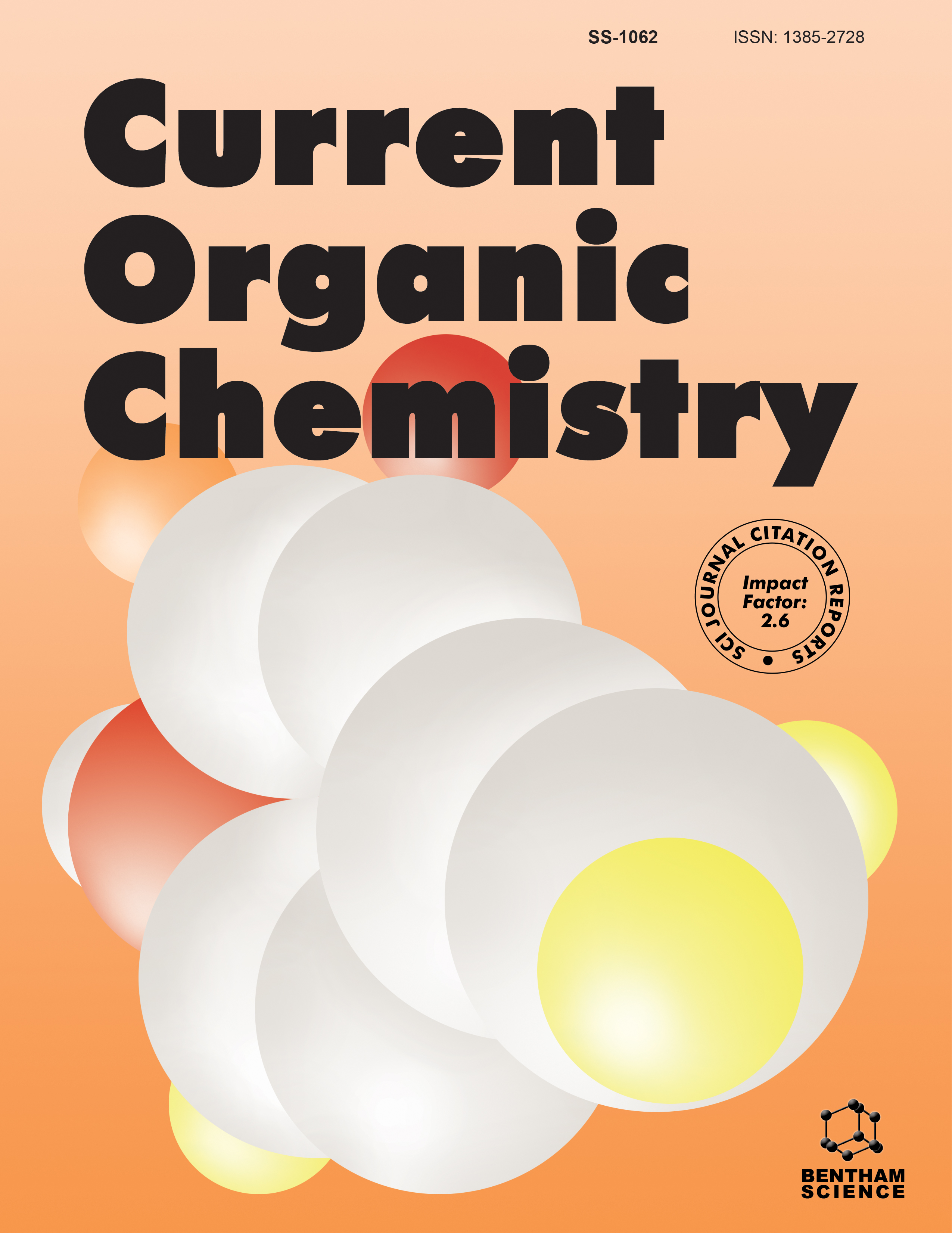- Home
- A-Z Publications
- Current Organic Chemistry
- Previous Issues
- Volume 16, Issue 21, 2012
Current Organic Chemistry - Volume 16, Issue 21, 2012
Volume 16, Issue 21, 2012
-
-
Ionic Liquids in Biocatalytic Oxidations: From Non-conventional Media to Non-solvent Applications
More LessAuthors: Elena Fernandez-Alvaro and Pablo Dominguez de MariaIonic Liquids (ILs) have emerged in the last decade as a novel technology to be applied in biocatalysis (among other areas of chemistry). Most of the work has focused on 2nd generation of ILs, a broad palette of tuneable solvents yet with still high prices for commercial applications. It is thus expected that such know-how will be transferred to 3rd generation of ILs and to deep-eutectic-solvents (DES), as the greener and more Read More
-
-
-
Last Advances in Synthesis of Added Value Compounds and Materials by Laccasemediated Biocatalysis
More LessAuthors: Alessandra Piscitelli, Antonella Amore and Vincenza FaracoLaccases represent versatile catalysts being able to oxidize a wide range of aromatic substrates and are susceptible of several industrial applications based on both oxidative degradation reactions and synthetic chemistry. The range of laccase based synthetic reactions is extremely wide. Laccases are able to catalyze transformation of antibiotics based on both β-lactams functionalization and phtalides functionalizatio Read More
-
-
-
Recent Advances in Cofactor Regeneration Systems Applied to Biocatalyzed Oxidative Processes
More LessAuthors: Cristina Rodriguez, Ivan Lavandera and Vicente GotorNowadays, the design of sustainable processes applicable at industrial scale is highly desirable due to environmental reasons. The use of biocatalytic reactions to carry out oxidative transformations is one of the possible strategies framed in here due to the mildness and usually high selectivities achieved with these methods. Anyway, while implementing this type of system at industrial scale several drawbacks must b Read More
-
-
-
Applications of Flavoprotein Oxidases in Organic Synthesis: Novel Reactivities that Go Beyond Amine and Alcohol Oxidations
More LessAuthors: Remko T. Winter and Marco W. FraaijeOxidases represent a distinct and interesting class of oxidative biocatalysts. A major portion of the known oxidases contain a flavin as cofactor, with glucose oxidase as best known example. While a number of oxidases are well known in the field of biocatalysis, the total number of available oxidases is rather limited. However, by analysis of literature data and genome sequences a clear picture emerges: nature harbors a larg Read More
-
-
-
Selective Modifications of Steroids Performed by Oxidative Enzymes
More LessAuthors: Alina Swizdor, Teresa Kolek, Anna Panek and Natalia MileckaResearch on steroid biooxidation is being pursued for development of processes exploitable by the pharmaceutical industry, and also for the purpose of preparation of potentially useful steroid analogues which are otherwise inaccessible. The use of enzymes provides high regio- and stereoselectivity of the reaction to be performed. In this work a review of recent and important findings related to microbial and enzym Read More
-
-
-
Halogenating Enzymes for Selective Halogenation Reactions
More LessHaloperoxidases have been the only halogenating enzymes know for more than 35 years. They produce in general free hypohalous acid which acts as the halogenating agent and leads thus to a product formation almost identical to chemical halogenation reactions using electrophilic halogen species. With the detection of FADH2-dependent halogenases a type of enzymes was found that shows high substrate specificity and cat Read More
-
-
-
New Trends in Organic Synthesis with Oxidative Enzymes
More LessAuthors: Gonzalo de Gonzalo, Alejandro A. Orden and Fabricio R. BisognoOxidative enzymes constitute privileged catalysts in organic synthesis. Environmentally benign reaction conditions along with high selectivity are the most appealing characteristic shown by these biocatalysts in contrast to classical metal-based reagents. The present review surveys new perspectives and concepts derived from oxidative enzymatic processes, comprising oxidative C-C bond forming reactions, atroposelecti Read More
-
-
-
Solvent Free Synthesis of Novel Mono- and Bis-Benzoxazines from Cashew Nut Shell Liquid Components
More LessCashew nut shell liquid (CNSL) is a largely available by-product of the cashew agro-industry. In this paper, the main constituents (cardanol, cardol and methylcardol) obtained after separation of the CNSL mixture have been used as starting material to prepare a variety of novel mono- and bis-benzoxazines via cyclization reactions with formaldehyde and aromatic amine derivatives under mild conditions. These model reactions Read More
-
Volumes & issues
-
Volume 29 (2025)
-
Volume 28 (2024)
-
Volume 27 (2023)
-
Volume 26 (2022)
-
Volume 25 (2021)
-
Volume 24 (2020)
-
Volume 23 (2019)
-
Volume 22 (2018)
-
Volume 21 (2017)
-
Volume 20 (2016)
-
Volume 19 (2015)
-
Volume 18 (2014)
-
Volume 17 (2013)
-
Volume 16 (2012)
-
Volume 15 (2011)
-
Volume 14 (2010)
-
Volume 13 (2009)
-
Volume 12 (2008)
-
Volume 11 (2007)
-
Volume 10 (2006)
-
Volume 9 (2005)
-
Volume 8 (2004)
-
Volume 7 (2003)
-
Volume 6 (2002)
-
Volume 5 (2001)
-
Volume 4 (2000)
Most Read This Month
Article
content/journals/coc
Journal
10
5
false
en


